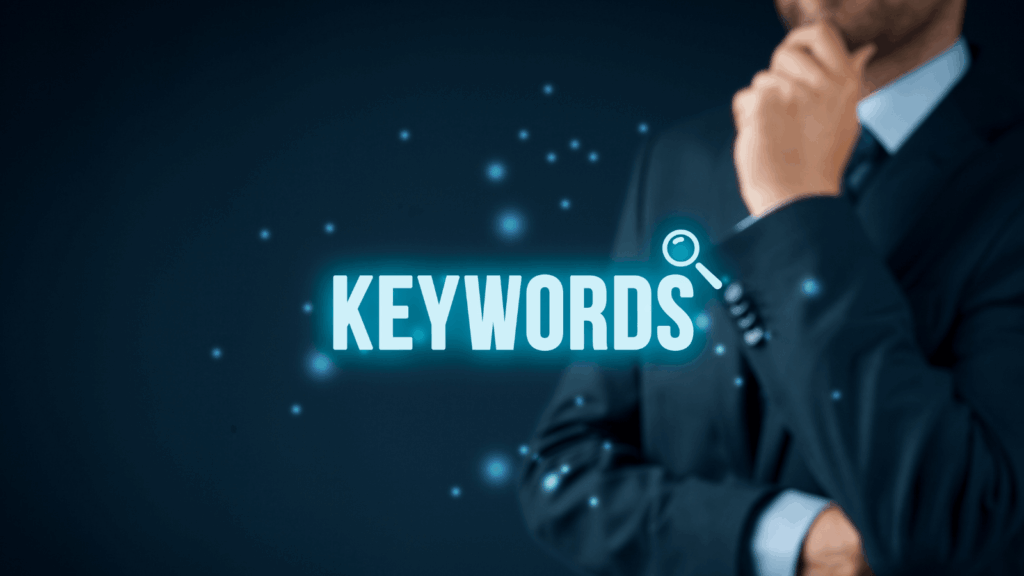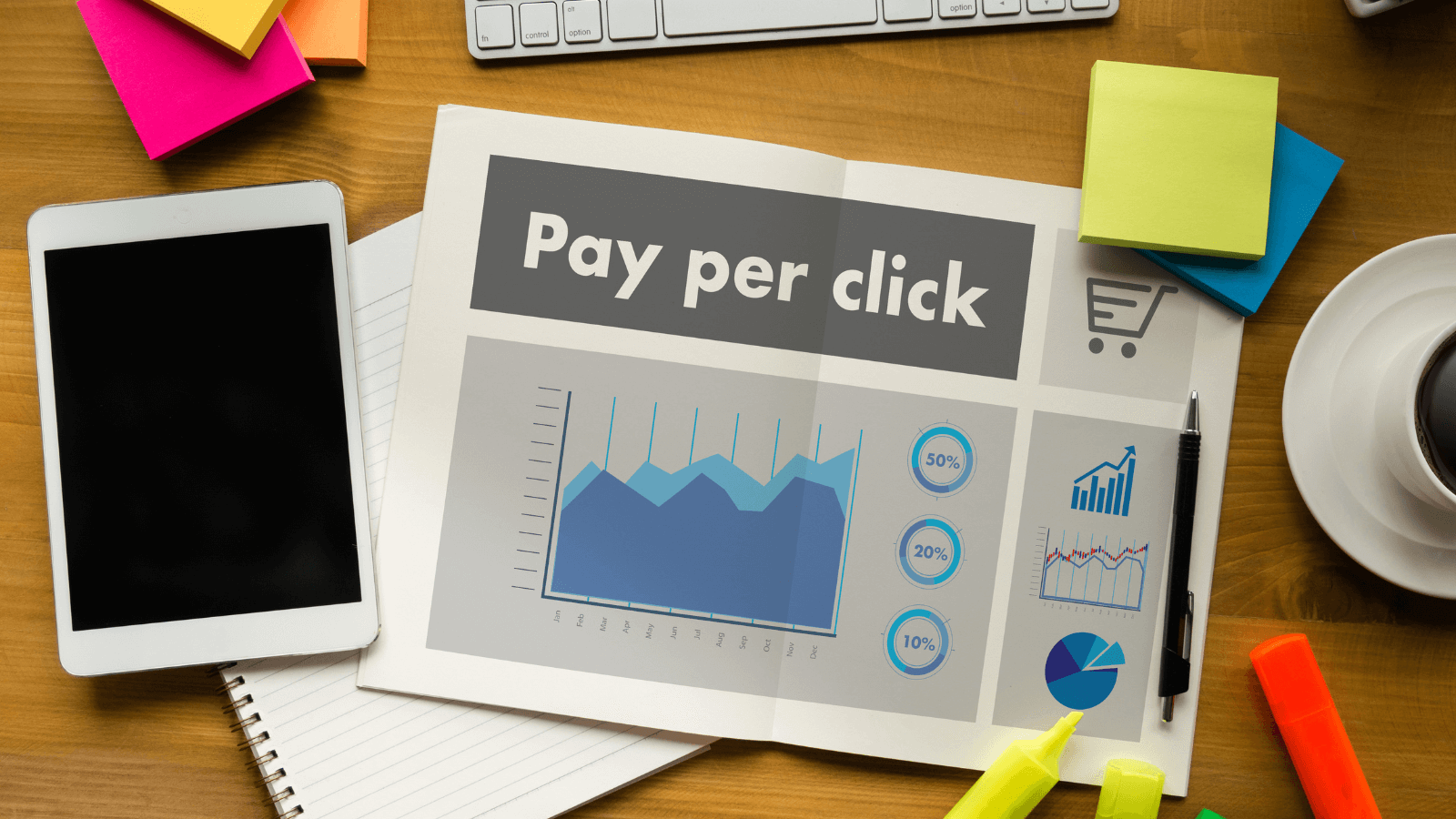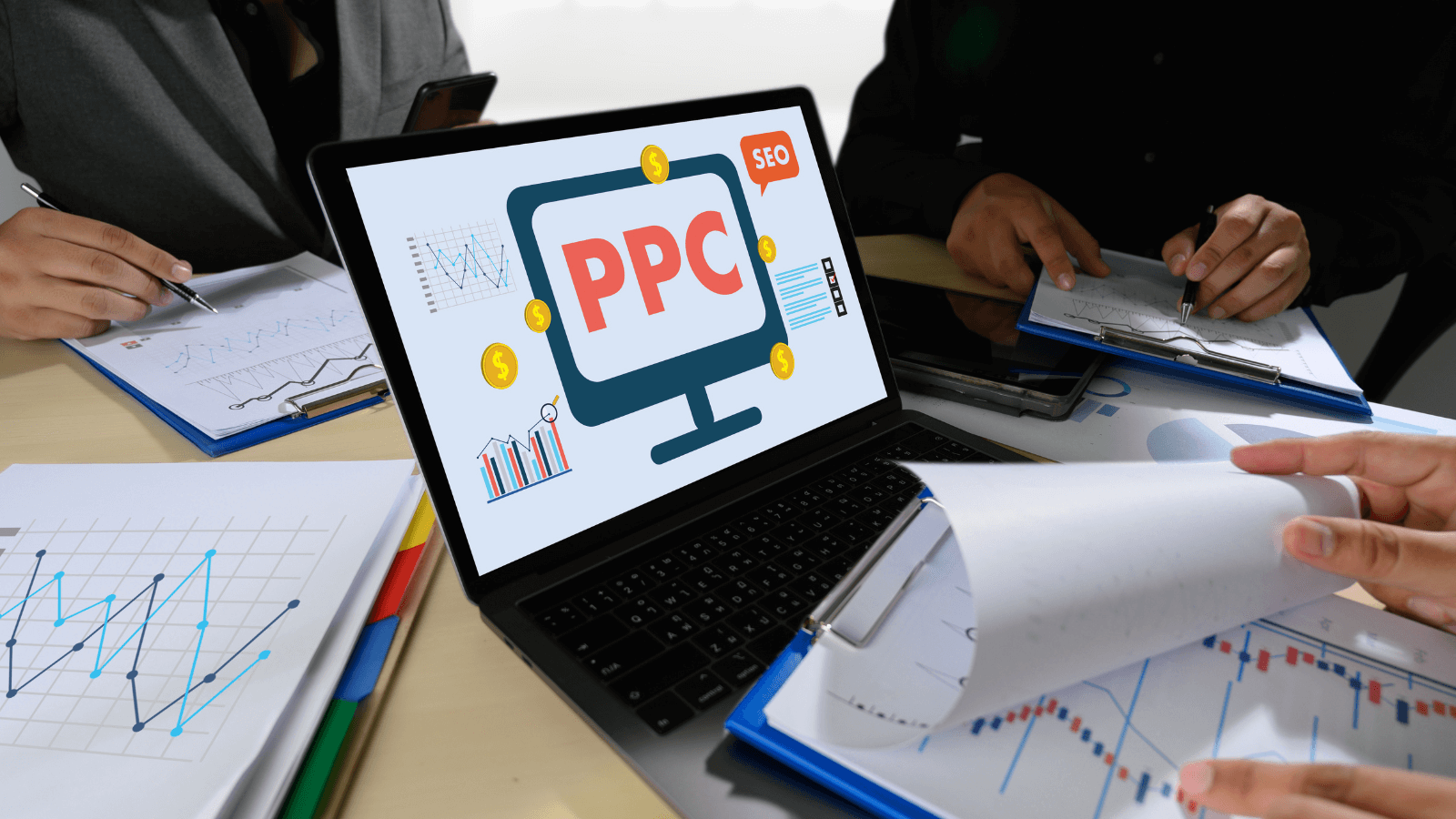As you are building out your digital marketing strategy, you are probably looking to add a PPC (pay-per-click) strategy. It makes a great deal of sense to start advertising on Google Ads, as Google has come out and said that advertisers make an average of $2 in revenue for every $1 spent on Google Ads.
While I’m sure any business owner would look at that as a good investment, it is important to make sure you are getting the most out of your ad dollars by selecting the bidding strategy that makes the most sense for you and your business. To make the most informed decisions about what bidding strategy to go with, you are going to need to know the following things: the difference between manual and automated bidding, the role of keywords in bidding, the different types of bidding strategies, and the pros and cons of each strategy.
PPC Bidding Basics
What is PPC Bidding?
Before building your Google ad strategy, it is helpful to understand what is PPC bidding. PPC bidding is a digital marketing strategy where businesses and advertisers compete to have their ads appear in prominent positions in SERPs (search engine results pages).
Advertisers place bids on the specific keywords or phrases that they want to advertise on. These bids are essentially how much the advertiser is willing to pay each time a user clicks their ad, hence the term pay-per-click. Platforms like Google look at these bids along with ad quality and relevance to determine which ads get served and where.
The Auction Process

Here’s how PPC bidding looks:
- Advertisers set a maximum bid on the highest prices they’re willing to pay for a click on their ad.
- Advertisers select the specific keywords for which they want their ad to appear.
- The instant auction takes place whenever a user searches for the keyword.
- Google ranks the ads based on the bid amount, the ad quality, the ad relevance, and the data they have on the user being served the ad.
- The ads with the best combination of the attributes above are served in a prominent position on the SERP or website.
Keywords’ Role in PPC Bidding

You’ve already heard a bit about keywords’ role in this process, since they are the key to a successful PPC campaign. Let’s dive into them a little bit more. Keywords are at the center of your PPC campaign because they are what you are bidding on and dictate when and where your ads will appear. When setting up your campaign, you are going to have to make sure you are choosing the right keywords for your business and campaign goals. There are three groups of keywords to look at when crafting your bidding strategy: long-tail, short-tail, and negative keywords.
Long-tail keywords are longer, more specific keywords. These are those more complex keywords like “best gluten-free pizza near me” or “best white casual sneakers for walking”. These types of keywords are usually cheaper and less competitive because they have less search volume than short-tail keywords, but they usually drive more conversions since they are so specific. All of these variables make long-tail keywords a cost-effective way to get conversions.
Short-tail keywords are shorter, more general search terms. Searches like “pizza” or “men’s shoes” are short-tail keywords. These keywords usually have higher search volume than long-term keywords, making them more competitive and expensive to bid on. These keywords are great for increasing brand awareness with the higher search volume.
When crafting your PPC strategy, it is best to include a combination of both long-tail and short-tail keywords. Having a good mix of these keywords will give you a good balance of increasing brand awareness with the short-tail keywords and increasing conversions with the long-tail keywords.
Negative keywords are keywords that you select to NOT run ads on. Negative keywords go onto a list that you create to make sure that none of your budget goes towards keywords and SERPs that won’t apply to your target customer. For example, if you sold premium menswear, you would want to add any keywords containing “cheap”, “discount”, or “budget” to your negative keyword list to not waste ad spend on these search queries.
Manual vs Automated PPC Bidding
Now that you understand how the bidding process works, let’s dive deeper into the different ways you could place bids. There are two different ways to place bids: manual or automated.
Manual bidding is a hands-on approach where you, the advertiser, are in complete control of your bids. You are in control of every aspect of bidding, from setting the maximum bids to adjusting the bids as data comes in.
- Advantages of manual bidding: you are in full control, it’s good for learning how bids affect the performance of ads, and you can react quickly to changes to prioritize specific keywords.
- Disadvantages of manual bidding: incredibly time-consuming, it is difficult to scale if you are running a lot of campaigns, and it’s prone to human error, meaning you could miss key opportunities that an automated system could take advantage of.
Automated bidding is a bidding strategy that uses machine learning to set the bids in real time for you. Google calls automated bidding “Smart Bidding,” and it is just automated bidding that uses machine learning to optimize ads using real-time data signals (like device, time of day, and location) to predict the likelihood of conversion. All you have to do is tell Google what goals you are looking to achieve, and then the algorithm adjusts the bids automatically to achieve the goal.
- Advantages of automated bidding: it saves time, it is easy to scale when managing a lot of different campaigns, and it is fully data-driven, meaning that it uses signals like user location, device, and time of day to optimize the ads for performance.
- Disadvantages of automated bidding: it requires historical data to be effective, it can be less transparent about how bids are being set, and you have less control.
Things to Consider Before Selecting a PPC Bidding Strategy
Now that you know the basics, it’s almost time to choose your PPC bidding strategy, but there are a few things you should consider before selecting a bidding strategy. The first thing you should consider before jumping into a PPC campaign is your goals. Your goal will completely dictate which bidding strategy is best for you. It is important to ask yourself, “What am I looking to get out of this campaign?”. Some common goals could be to increase brand awareness through impressions, to increase website traffic through clicks, to generate leads through form fills and calls, to increase sales revenue through conversions, or your goal could be a mix of these.
Regardless of what your goal is, it is important to establish what you want from the campaign and to establish KPIs before starting the campaign. Once you have a clear goal and KPIs to measure success, it’s finally time to select which PPC bidding strategy is best for you.
7 Different Types of PPC Bidding Strategies on Google
Here are the 8 different PPC strategies and the pros and cons of each of them:
1. Manual CPC (Cost-Per-Click): In this strategy, you manually set the maximum bid you are willing to pay for each click on your ads. The system defaults to setting a maximum bid for the entire ad group, but you are also able to go in and set a maximum bid for each target keyword in the ad group. In this strategy, you are responsible for monitoring the performance of your ads and adjusting bids accordingly.
Pros:
- You have complete control over bids.
- Complete transparency: you know exactly where every dime of your budget is going
- Great for newer campaigns that lack data. Most automated strategies rely heavily on historical data to work effectively
Cons:
- Extremely time-consuming. This strategy requires constant monitoring coupled with manual adjustments.
- Presents the opportunity for human error. Manual control comes with the risk of making mistakes, which could lead to insufficient spending.
- Incredibly hard to scale. When running multiple campaigns, it is very difficult to manually run all of them effectively.
- Lack of data-backed decision-making. When manually running a campaign, you are unable to account for the real-time signals (like device, location, or time of day) that automated bidding strategies use to optimize bids.
2. Maximize Clicks: This strategy is an automated bidding strategy in Google Ads designed to get you the most clicks possible given your daily budget. Instead of setting bids manually, you set a daily budget, and Google’s algorithm adjusts your bids to find the cheapest clicks. You are able to set a maximum bid to make sure that Google doesn’t spend too much of your daily budget on one click. This strategy is great if your goal is to generate the most amount of website traffic possible.
Pros:
- Drives traffic quickly. This strategy will get you a lot of visitors to your site quickly, so if that’s your goal, this strategy is for you.
- Great for data collection. This strategy is good for newer campaigns because it generates a lot of data on which keywords and ads are working and which ones are not.
Cons:
- Generates low-quality traffic. Since the algorithm is only focused on generating clicks, it might bid on cheaper keywords that won’t lead to conversions.
- Opportunity for inefficient spending. The algorithm focuses more on clicks and throws conversions out the window. This opens you up to the risk of a poor return on your budget.
3. Maximize Conversions: This strategy is a smart bidding strategy from Google Ads that is focused on getting you as many conversions as possible within your daily budget. In this strategy, Google’s algorithm looks at real-time signals, like device, location, time of day, and audience, from each user and then bids on the users with the highest chance of converting.
Pros:
- Highly effective at driving conversions. If your goal is to hit a specific conversion goal, this strategy is for you.
- Completely data-driven. This algorithm analyzes all of the real-time signals to make bidding decisions.
- Tied directly to ROI. This strategy is focused solely on driving conversions, which directly impacts revenue and your bottom line.
Cons:
- Requires historical data to work effectively. Since this strategy is so data-driven, it needs a lot of data from previous conversions to make efficient decisions.
- Risk of low-value conversions. This strategy is only focused on the number of conversions, not the value of the conversions. If you run a business where conversions are not of equal value, the algorithm might optimize the campaign for the lower value conversions.
4. Maximize Conversion Value: This is a smart bidding strategy that is similar to maximize conversions, but goes one step further and looks at the likely value of each conversion. For this strategy to work effectively, you must assign a value to your conversions. For an e-commerce business, this would look like giving Google Ads the exact purchase value of each conversion. Businesses that are looking at conversions as leads would give Google the different values associated with the different conversions, for example, a form fill is worth $xx whereas a newsletter signup is worth $xx. Google’s algorithm then uses this information, paired with the real-time signals, to bid on the auctions that are more likely to give you the higher-value conversions.
Pros:
- Maximizes ROI and revenue. If your goal is to increase revenue, this is the strategy for you because it makes sure that your ad spend is going directly toward the conversions that will bring you the most money.
Cons:
- Requires historical and sufficient conversion data. Since this data relies heavily on data, it requires accurate conversion values to work effectively. This strategy also requires that you have enough conversions (about 15-30 in the past 30 days) to be successful.
- During the early stages, the algorithm can go through a “learning phase” trying to figure out what keywords bring the best conversions. During this time, you might have low performance due to the algorithm spending on keywords that aren’t bringing in conversions.
5. Target CPA (Cost-Per-Acquisition): This is a smart bidding strategy focused on getting as many conversions as possible at a specific average cost. You tell the algorithm the average cost you are willing to pay for a conversion, and it adjusts the bids in real time to meet that average cost. Obviously, the individual CPA will vary, but the goal is to get the average cost right around the price that you set.
Pros:
- Predictable CPA. This strategy creates a generally predictable CPA, which can be good for businesses that need to manage costs closely.
Cons:
- Requires historical data to work efficiently. Just like the other automated strategies, this one needs a decent volume of conversion data to work effectively.
- It can be unstable and less flexible than other strategies. This strategy is prone to performance issues during a “learning phase” in the beginning. Another issue that might arise if you set your CPA too low is that the algorithm might not be able to compete in higher-priced auctions, leading to fewer conversions.
6. Target ROAS (Return On Ad Spend): This is a smart bidding strategy focused on getting the highest possible conversion value for a specific return on ad spend. ROAS is a marketing metric that is very similar to ROI. ROAS is the revenue that comes from ad spend divided by the ad spend, multiplied by 100. In this strategy, you set a target ROAS percentage. This percentage could be 300%, meaning that you want to make $3 in revenue for every $1 of ad spend. Google’s algorithm takes this percentage and bids more aggressively on the auctions that it thinks will result in high-value conversions to meet or exceed the target ROAS.
Pros:
- This strategy maximizes profitability. This strategy focuses on the higher-value conversions and tries to get the most profit from your budget.
- This strategy is highly automated. All you have to do is set your ROAS percentage, and the algorithm handles all the bid adjustments in real time.
Cons:
- Needs historical conversion data. Just like the other automated strategies, this one needs a decent volume of conversions to work correctly.
- Limits your ad’s reach. Since the algorithm is only going after the high-value conversions, your ad might result in lower traffic and fewer conversions overall; however, your ROAS goal still might be met.
7. Target Impressions Share: This is an automated strategy that is focused on achieving a specific percentage of impressions on the SERP. This strategy is great if your goal is to grow your brand visibility or awareness. In this strategy, you choose from three different placement options for your ad: absolute top of page (first ad position), top of page (any ad spot before the organic results), or anywhere on the page. You then set a target impression share percentage and a maximum bid. This strategy is most commonly used when wanting to dominate the SERP for your brand name, if you want to appear first for your competitor’s name.
Pros:
- You are able to control where on the SERP your ad appears.
- Allows you to completely dominate keywords, ensuring that your ad is the first result when a user searches that keyword.
Cons:
- Risk of overspending. There can potentially be a high cost associated with achieving a high impression share, especially on competitive keywords. This could lead to a high CPC and overspending.
- Risk of low ROAS. Since you are only targeting impressions, your ads could have a low CTR, leading to impressions that don’t result in clicks and wasted ad spend.
Best Practices to Get the Most Out of Your PPC Budget
Hopefully, now you have a grasp on what PPC bidding strategy you are going to use. Here are some general best practices to help you succeed in your PPC campaigns.
Set clear goals and KPIs for your campaigns. Before starting any campaign, make sure that you clearly define what result you are looking to gain from the campaign. Set clear KPIs so you are able to recognize what a successful campaign is and what it would look like. By doing this, you will set yourself up to definitively know what is working and what is not working in a campaign.
Use A/B testing to compare strategies. A/B tests are extremely helpful when trying to diagnose what doesn’t work in a campaign. Using A/B tests to test the different elements of your ad copy will give you valuable insight into the aspects of your ads that users like and dislike. A/B tests take the guesswork out of your campaign by helping to identify what elements are working and which ones are not working, allowing you to optimize your ads.
Continuously monitor campaigns and adjust accordingly. It is important to monitor your campaigns for any fluctuations in performance. Even if you choose an automated strategy, it is still imperative that you check in on it every so often to see if there are any errors, because algorithms make mistakes just like us humans!
Maintain an optimized keyword list. Continuously update your keywords to make sure you are getting the most out of your keyword list. You should be deleting poor-performing keywords from your target list so you are not wasting ad spend on them. Review your negative keyword list regularly and make sure that you are updating it as new competitors come in or as you find the system bidding on keywords that you don’t want your ad shown on.
Optimize your landing pages. Make sure that your landing pages are relevant to the ad connected to them. Your landing page should directly match the offer that you made in your ad so that customers are getting what they expected. It is also important to make sure that your landing pages load quickly and are free of any errors. If you fail to do these, your ads will have a high bounce rate because users will leave your pages if they find them irrelevant or take too long to load.
Final Thoughts: Time to Start Running Campaigns!
A successful PPC campaign can do anything from raise brand awareness to increase website traffic to increase profitability. For any of these great things to happen, a campaign must have a great foundation. To lay a great foundation, you must research both long and short-tailed keywords to target with your campaign. You must then research and compile a list of negative keywords, or the searches that you don’t want your ads appearing in. The last step of laying that foundation is the most important: setting a goal for the campaign. This step is pivotal and defines success in your campaign.
Once you’ve laid a solid foundation, it’s time to pick the PPC bidding strategy. You have a few laid out in front of you, and it is important to pick the strategy that most aligns with your goals. If you choose to manually run the bidding on your campaign, make sure you are consistently checking in and adjusting bids as needed. If you go with an automated or smart bidding strategy, make sure you are choosing a strategy that aligns with your KPIs. No matter what strategy you pick, remember to regularly check the campaign to make any adjustments that are needed.
If you’ve gotten to the end of this blog and realized that running your own PPC campaign might just be too much for you, don’t worry, Digital Strike – Targeted Marketing is here to save the day! Digital Strike – Targeted Marketing is the award-winning digital marketing agency that can help take your Google Ads campaign to the next level. We’ve run countless paid campaigns on all major digital advertising platforms, and we’re ready to put that expertise to work on your campaign.





